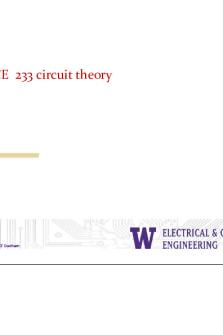Chapter 1 - lecture slides PDF

| Title | Chapter 1 - lecture slides |
|---|---|
| Author | Ke Xu |
| Course | Economics 101 |
| Institution | University of California Davis |
| Pages | 14 |
| File Size | 470.4 KB |
| File Type | |
| Total Downloads | 16 |
| Total Views | 177 |
Summary
lecture slides...
Description
1.1 What Is Macroeconomics? • In this chapter, we learn: – What macroeconomics is and consider some questions. – How macroeconomics uses models, and why. – The book’s basic three-part structure: the long run, the short run, and issues for the future.
• The difference between macro- and microeconomics: – Macroeconomics • studies collections of people and firms, and how their interactions through markets determine the overall economic activity in a country or region. • “the big picture”
– Microeconomics • focuses on the study of individual people, firms, or markets.
• Important macroeconomic questions to consider: – Why is today’s average American • more than 10 times richer than 100 years ago? • 50 times richer than the average Ethiopian?
– Do we understand and know the causes of • the recent global financial crisis? • the Great Recession? • the European debt crisis of recent years?
– What role do stock markets play in the economy? What is a “bubble”?
• Topics studied in macroeconomics – The unemployment rate • fraction of the labor force that wants work but does not currently have a job.
– The inflation rate • rate at which prices are increasing in an economy.
– Government use of policy to direct or stabilize the economy • fiscal policy • monetary policy
1.2 How Macroeconomics Studies Key Questions • Macroeconomists have a general approach to study questions of interest: – Document the facts – Develop a model – Compare predictions of the model with original facts – Use the model to make other predictions that will eventually be tested
• Models – Models simplify the complicated real world into its most relevant elements. – A model is useful if it has good predictive power. – Economic models often involve systems of multiple equations.
• Suppose we have a working model. How can we use it? – Change parameters and exogenous variables to see how they affect endogenous variables. – Predict costs and benefits of new government policies.
1.3 An Overview of the Book The Long Run
• Income per person in the United States – $2,800 in 1870 – $44,000 in 2012 – Many countries have not experienced similar increases in living standards.
• The analysis of economic growth helps explain the long run.
The Short Run
• Potential output – Measure of how per capita GDP would evolve with completely flexible prices and fully employed resources. – In 1982, actual output was five percent less than potential output. – Deviations in actual and potential output usually last only a short time.
• Long-term growth dominates short run fluctuations....
Similar Free PDFs

Chapter 1 - lecture slides
- 14 Pages

Lecture 1: Introduction - Slides
- 14 Pages

Lecture 1 slides
- 30 Pages

Chapter 1 Powerpoint - Slides
- 31 Pages

Chapter 1 slides
- 11 Pages

Weeks 1&2 Lecture Slides
- 35 Pages

Bus100 Jul20 Lecture 1 Slides
- 24 Pages

Slides 9 - Lecture notes 1
- 18 Pages

Nr435-slides 1 - slides
- 15 Pages

Chapter 6 slides - Lecture notes 6
- 49 Pages

TLEP lecture wk - Slides
- 1 Pages

Lecture Slides 2
- 51 Pages

Lecture Slides Notes Cs307
- 9 Pages

Module 07 Lecture Slides Chapter 9
- 32 Pages

FPGA-Basics - Lecture slides
- 17 Pages

Lecture 14 Lecture Slides Muscles
- 11 Pages
Popular Institutions
- Tinajero National High School - Annex
- Politeknik Caltex Riau
- Yokohama City University
- SGT University
- University of Al-Qadisiyah
- Divine Word College of Vigan
- Techniek College Rotterdam
- Universidade de Santiago
- Universiti Teknologi MARA Cawangan Johor Kampus Pasir Gudang
- Poltekkes Kemenkes Yogyakarta
- Baguio City National High School
- Colegio san marcos
- preparatoria uno
- Centro de Bachillerato Tecnológico Industrial y de Servicios No. 107
- Dalian Maritime University
- Quang Trung Secondary School
- Colegio Tecnológico en Informática
- Corporación Regional de Educación Superior
- Grupo CEDVA
- Dar Al Uloom University
- Centro de Estudios Preuniversitarios de la Universidad Nacional de Ingeniería
- 上智大学
- Aakash International School, Nuna Majara
- San Felipe Neri Catholic School
- Kang Chiao International School - New Taipei City
- Misamis Occidental National High School
- Institución Educativa Escuela Normal Juan Ladrilleros
- Kolehiyo ng Pantukan
- Batanes State College
- Instituto Continental
- Sekolah Menengah Kejuruan Kesehatan Kaltara (Tarakan)
- Colegio de La Inmaculada Concepcion - Cebu